Do we have many air defense systems? ZPRK "Tunguska" and ZRPK "Shell"
Do we have many air defense systems? We continue to review domestic air defense systems available in the Armed Forces of Russia. Today we’ll talk about mobile anti-aircraft cannon-missile systems designed to provide anti-aircraft cover for troops in the frontline and in the air defense system in the depths of defense.
ZPRK "Tunguska"
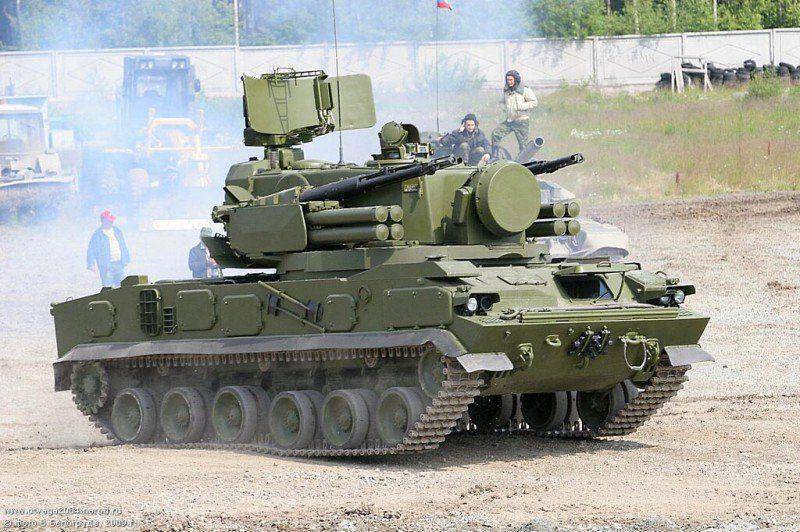
In the early 1970s, the development of a new anti-aircraft self-propelled artillery installation began, which was to replace the ZSU-23-4 Shilka. Calculations showed that increasing the caliber of artillery rifles to 30 mm while maintaining the same rate of fire would increase the likelihood of damage by 1,5 times. In addition, a heavier projectile gives an increase in reach in range and height. The military also wanted to get an anti-aircraft self-propelled gun equipped with its own radar for detecting air targets with a range of at least 15 km. It’s no secret that the Shilka radio instrument complex has very limited search capabilities. The satisfactory effectiveness of the ZSU-23-4 actions was achieved only when preliminary target designation was obtained from the battery command post, which, in turn, used the data received from the control head of the division’s air defense head, who had at his disposal a low-altitude circular surveillance radar of the P-15 or P type -19. In the event that communication with control centers disappeared, the ZSU-23-4 crews acting independently, with their own radars in the circular search mode, could detect about 20% of air targets.
Given the fact that a number of air defense systems were already in service with the Soviet Army and new ones were being developed, the leadership of the USSR Ministry of Defense hesitated regarding the need to create another anti-aircraft artillery complex. The impetus for the decision to start work on a new army complex on a caterpillar chassis was the active use by the Americans at the final stage of the war in Southeast Asia of anti-tank helicopters equipped with ATGMs.
The anti-aircraft weapons available in the troops in the early 1970s were mainly focused on combating jet fighter-bombers, attack aircraft and front-line bombers and could not effectively counter combat helicopters using short-term climb tactics (no more than 30-40 s) to launch guided missiles. In this case, air defense systems of the regimental level were powerless. The operators of the Strela-1 air defense system and the Strela-2M MANPADS did not have the ability to detect and capture a target that briefly hung at an altitude of 30-50 m at a distance of several kilometers. The Shilok crews did not have time to obtain external target designation, and the effective firing range of 23 mm assault rifles was less than the launch range of anti-tank missiles. The Osa-AK division anti-aircraft missile systems located in the depths of their positions at a distance of 5-7 km from the attacking helicopters, according to the total reaction time of the complex and the SAM missiles, could not hit the helicopter before launching the ATGM from it.
In order to increase firepower, probability and range of destruction of air targets, the new complex, in addition to 30-mm artillery guns, it was decided to arm anti-aircraft missiles. The Tunguska SAM system, in addition to a pair of 2-mm 38A30 double-barreled guns, included: a decimeter-wave circular radar and 8 missiles with radio command guidance through the optical channel along the missile tracer. This anti-aircraft self-propelled gun was the first to achieve a combination of two types of weapons (cannon and missile) with a single radar-instrument complex for them. Fire from 30-mm cannons can be fired on the fly or from a place, and the launch of SAMs only after a stop. The radar-optical fire control system receives primary information from a surveillance radar with a target detection range of 18 km. There is also a target tracking radar with a range of 13 km. Hanging helicopters are detected by the Doppler frequency offset from the rotating rotor, after which it is taken for auto tracking in three coordinates by the target tracking station. In addition to the radar, the LMS includes: a digital computer, a stabilized optical sight and devices that determine the angular coordinates and nationality of the target. The combat vehicle is equipped with a navigation, topographic and orientation system for determining coordinates.
Talking about the Tunguska air defense system, it is worthwhile to dwell on its armament. The 30A2 double-barreled 38-mm anti-aircraft machine gun weighs 195 kg and provides firing of cartridges supplied from a cartridge strip common to two barrels.
Management of firing is carried out using electric trigger. Barrel cooling - liquid. The total rate of fire - 4050-4800 rds / min. The initial velocity of the shells is 960-980 m / s. The maximum length of a continuous line is 100 rounds, after which barrel cooling is required.

The 9M311 anti-aircraft guided missile, 2,56 m long, weighs 42 kg (54 kg in TPK) and is built according to the bicaliber design. The starting and starting engine in a plastic case with a diameter of 152 mm, after the development of solid fuel, accelerates SAM to 900 m / s and is separated after about 2,5 s after start. The absence of a marching engine eliminates smoke and allows the use of relatively simple guidance equipment with an optical target line of sight. At the same time, it was possible to ensure reliable and accurate guidance of missiles, reducing the mass and dimensions of the missile, and to simplify the layout of on-board equipment and combat equipment.
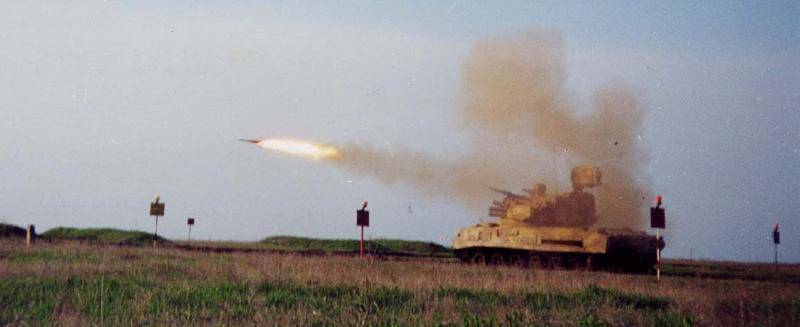
The average speed of the march stage of a rocket with a diameter of 76 mm on the trajectory is 600 m / s. At the same time, defeat is ensured in oncoming and catch-up courses of targets flying at a speed of up to 500 m / s and maneuvering with an overload of 5-7g. The warhead of the rod type weighing 9 kg is equipped with contact and non-contact fuses. During tests at the test site, it was found that the probability of a direct hit on the target in the absence of organized interference is more than 0,5. With a miss of up to 15 m, warhead detonation is carried out by a non-contact fuse with a laser sensor of 4 semiconductor lasers forming an eight-beam radiation pattern perpendicular to the longitudinal axis of the rocket.
When firing anti-aircraft guns, the digital computer system automatically solves the problem of meeting the projectile with the goal after entering it in the affected area according to data from the tracking radar and rangefinder. In this case, guidance errors are compensated, the angular coordinates, range are taken into account, and when the machine moves, the quality and course angles. In case of suppression by the enemy of the range finder channel, a transition was made to manual tracking of the target in range, and if manual tracking was not possible, to tracking the target in range from the detection station or to its inertial tracking. When staging intense interference of the tracking station along the angular channels, the target was tracked in azimuth and elevation by an optical sight. But in this case, the accuracy of firing from guns is significantly impaired and there is no possibility of firing at targets in conditions of poor visibility.
When firing anti-aircraft missiles, target tracking in angular coordinates is carried out using an optical sight. After launch, the rocket is displayed in the field of view of the optical direction finder of the coordinate extraction equipment. The signal from the rocket tracer in the equipment determines the angular coordinates of the missiles relative to the line of sight of the target, which entered the computer system. After the formation of missile control commands, they are encoded into pulse packets and the transmitter of the station guidance radio signals are transmitted to the rocket.
To aim the anti-aircraft missile, the target must be observed visually, which significantly limits the effectiveness of the first version of the Tunguska. At night, with heavy smoke and fog, it is possible to use only artillery weapons.
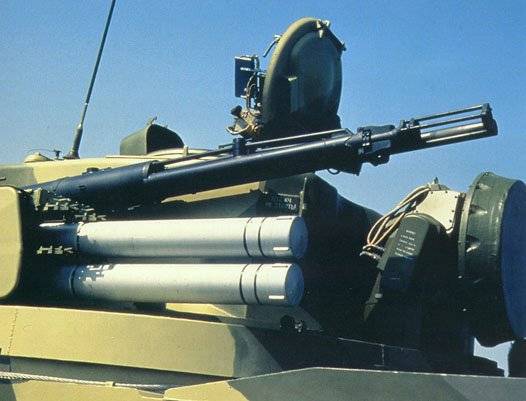
The maximum range of destruction of air targets by artillery guns is up to 4 km, in height - up to 3 km. With the help of missiles, a target can be fired at ranges of 2,5 to 8 km, and altitude up to 3,5 km. Initially, there were 4 missiles on the machine, then their number was doubled. For 30-mm guns there are 1904 artillery shots. The ammunition consists of high-explosive incendiary and fragmentation tracer shells (in a ratio of 4: 1). The probability of hitting a target of the “fighter” type when fired from cannons is 0,6. For missiles - 0,65.
ZPRK "Tunguska" entered service in 1982. The tracked chassis of the GM-352 cannon-missile system, with a war machine weight of 34 tons, provides highway speeds of up to 65 km / h. The crew and internal equipment are covered with bulletproof armor providing protection from rifle caliber bullets from a distance of 300 m. For power supply of the machine with the main diesel engine switched off, there is a turbine unit.
It was assumed that the combat vehicles of the Tunguska complex at the regimental level would replace the ZSU-23-4 Shilka, but in practice this was not fully achieved. Four combat vehicles of the Tunguska anti-aircraft missile system were reduced to a rocket-artillery platoon of an anti-aircraft missile-artillery battery, which also had a platoon of the Strela-10 air defense system.
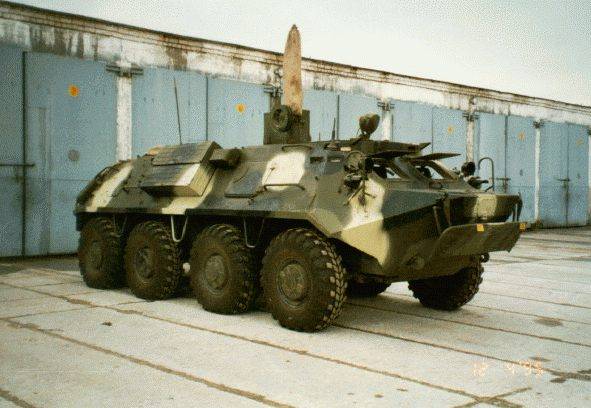
The battery was part of the anti-aircraft division of the motorized rifle (tank) regiment. The PU-12M command post was used as the battery command post, which was subordinate to the command post of the PPRU-1 of the regiment air defense chief. When pairing the Tunguska complex with the PU-12M, control commands and target designation on the combat vehicles of the complex were transmitted by voice using standard radio stations.
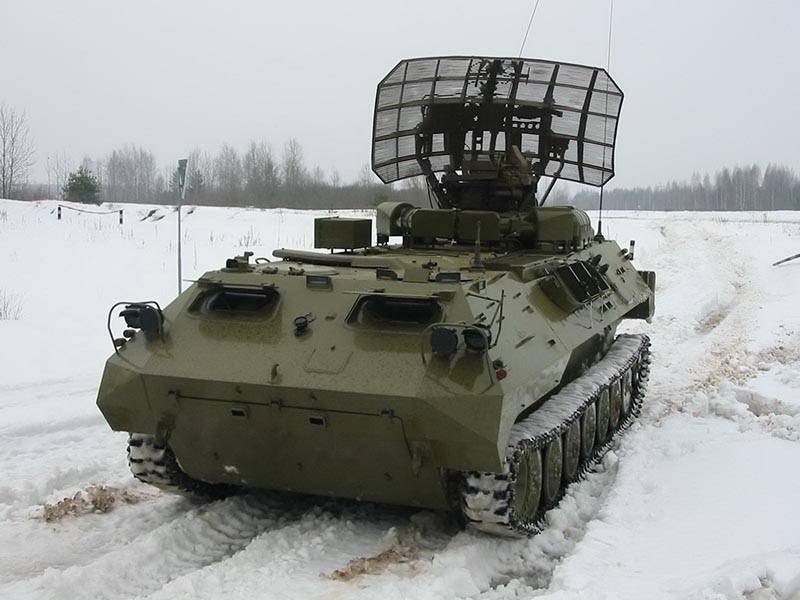
Although the supply of Tunguska air defense missile systems to the troops began more than 35 years ago, artillery and missile systems have not yet been able to completely supplant the seemingly hopelessly outdated Shilka, which were discontinued in 1982. This was primarily due to the high cost and lack of reliability of the Tungusok. It was possible to eliminate the main "children's sores" of the new air defense systems, in which many fundamentally new technical solutions were used only by the end of the 1980s.
Although developers from the very beginning used the latest electronic components at the time, the reliability of electronic components left much to be desired. For timely troubleshooting of very complex instrumentation and radio equipment and missile testing, three different repair and maintenance machines (based on the Ural-43203 and GAZ-66), and a mobile workshop (based on the ZiL-131) for field repairs were created GM-352 crawler chassis conditions. The replenishment of ammunition should occur with the help of a transport-loading vehicle (based on KamAZ-4310), which carries 2 ammunition and 8 missiles.
Moreover, in comparison with the Shilka, the combat capabilities of the Tunguska have substantially increased, the military wanted a simpler, more reliable and cheaper cannon-rocket complex capable of operating missiles in the dark and in low visibility conditions. Given the shortcomings identified during the operation, from the second half of the 1980s, work was carried out to create a modernized version.
First of all, it was about increasing the technical reliability of the hardware of the complex as a whole, and improving combat controllability. Fighting vehicles of the modernized Tunguska-M complex were interfaced with the unified Battery Rangir command post, with the possibility of transmitting information via a telecode communication line. For this, combat vehicles were equipped with appropriate equipment. In the case of controlling the actions of the Tunguska fire platoon from the battery command post, the analysis of the air situation and the selection of targets for shelling by each complex were carried out at this point. In addition, new gas turbine units with a resource increased from 300 to 600 hours were installed on the upgraded machines.
However, even taking into account the increased reliability and command controllability of the Tunguska-M air defense missile system, such a serious drawback as the impossibility of firing rockets at night and at low transparency of the atmosphere was not eliminated. In this regard, despite funding problems in the 1990s, the creation of a modification capable of using rocket weapons was carried out regardless of the possibility of visual observation of the target. In 2003, the radically modernized Tunguska-M1 air defense missile system was adopted for service in Russia. The most noticeable external difference between this option and previous versions is the oval-shaped radar antenna for airborne surveillance. During the creation of the Tunguska-M1 modification, work was carried out to replace the GM-352 chassis manufactured in Belarus with the domestic GM-5975.
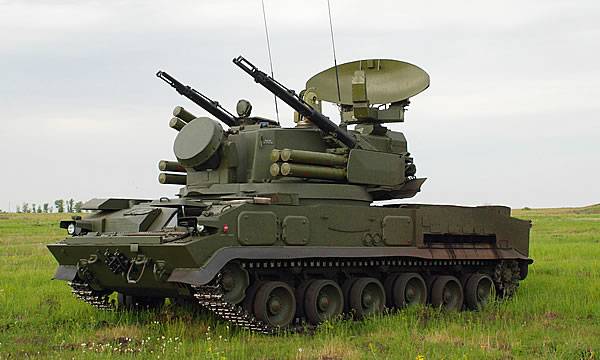
For the modernized complex, a new 9M311M missile system with improved characteristics was created. In this missile, the non-contact laser target sensor was replaced by radar, which increased the likelihood of hitting small-sized high-speed targets. Instead of a tracer, a flash lamp was installed, which, together with an increase in the operating time of the engine, made it possible to increase the range of damage from 8000 m to 10000 m. At the same time, the firing efficiency increased by 1,3-1,5 times. Thanks to the introduction of a new fire control system into the hardware of the complex and the use of a pulsed optical transponder, it was possible to significantly increase the noise immunity of the missile control channel and increase the likelihood of destroying air targets that operate under the cover of optical interference. The modernization of the optical sighting equipment of the complex made it possible to significantly simplify the process of tracking the target by the gunner, while simultaneously increasing the accuracy of tracking the target and reducing the dependence of the effectiveness of the combat use of the optical guidance channel on the professional level of training of the gunner. The refinement of the pitching and heading angle measurement system made it possible to significantly reduce the disturbing effects on gyroscopes and reduce the error in measuring the tilt and heading angles, and increase the stability of the anti-aircraft gun control loop.
It is not entirely clear whether the Tunguska-M1 air defense missile system was able to operate missiles at night. A number of sources say that the presence of thermal imaging and television channels with automatic target tracking guarantees the presence of a passive target tracking channel and the daily use of existing missiles. However, it is not clear whether this is implemented on the complexes available in the Russian army.
Due to the collapse of the USSR and the “economic reforms” that began, the modernized Tunguska-M / M1 air defense missile systems were mainly exported, and our armed forces received very few of them. According to information published by The Military Balance 2017, the Russian army has more than 400 Tunguska air defense systems of all modifications. Considering that a significant part of these self-propelled anti-aircraft mounts was built during the Soviet era, many of them need reconstruction. The operation and maintenance of the Tungusok in working condition requires costly and time-consuming operations. Indirectly, this is confirmed by the fact that the ZSU-23-4 Shilka are still actively used in the Russian armed forces, which even after modernization and the introduction of the Strelets missile system into service are significantly inferior in combat effectiveness to all Tungusok variants. In addition, the radar systems of the modernized ZSU-23-4M4 "Shilka-M4" and ZPRK "Tunguska-M" no longer fully satisfy the requirements of noise immunity and stealth.
ZRPK "Shell" 1C and 2C
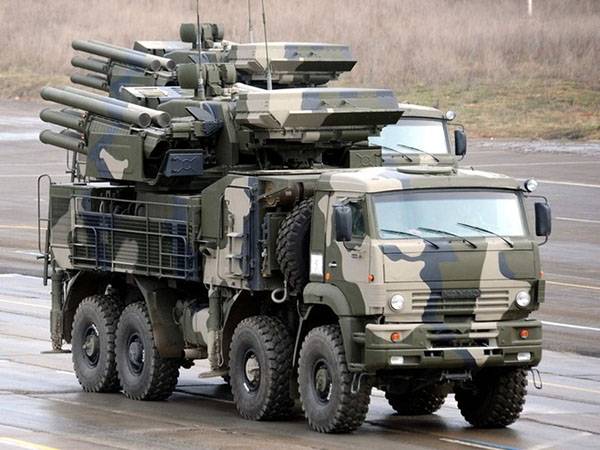
In 1989, the USSR Ministry of Defense expressed interest in creating an anti-aircraft missile-cannon complex designed to protect military columns on the march, and to provide air defense for important stationary objects. Although the complex received the preliminary designation "Tunguska-3", from the very beginning it was provided that its main weapons there will be rockets, and the guns were intended for drifting air targets and self-defense from a ground enemy. At the same time, the tactical and technical task specifically stipulated the possibility of the daily use of all types of weapons and resistance to organized radio-electronic and thermal interference. Since the complex was intended to be used outside the line of contact with the enemy, they decided to place it on a partially armored wheeled chassis in order to reduce the cost of it. The promising air defense missile system created at the Tula Instrument Design Bureau had a high continuity with the Tunguska air defense system.
The first modification of the new complex on the Ural-5323.4 automobile chassis was armed with two 30A 2A72 guns (used as part of the BMP-3 armament) and 9M335 anti-aircraft guided missiles were tested in 1996. However, the complex with a defeat range of 12 km and a height of 8 km did not impress specialists. The 1L36 Roman radar did not work reliably and was unable to demonstrate the declared characteristics, the complex was not capable of destroying targets beyond 12 km, and could only fire after stopping. The effectiveness of firing at air targets from 30-mm 2A72 guns with a total rate of fire of 660 rounds / min was unsatisfactory.
In the mid-1990s, amid a radical reduction in the country's military budget and the presence in the troops of a large number of different anti-aircraft systems inherited from the USSR, the need to fine-tune the new air defense system to the leadership of the Russian Defense Ministry seemed unobvious. Due to the shortage of radar equipment, a variant was developed with a passive optoelectronic system and a thermal imaging channel for detecting air targets and guiding missiles, but in this case there was no particular advantage over Tunguska-M1 air defense systems
The “Shell” received a permit to life thanks to a contract concluded with the United Arab Emirates in May 2000. The Russian side pledged to supply 50 complexes with a total value of $ 734 million (the Ministry of Finance of the Russian Federation paid 50% to pay off Russia's debt to the UAE). At the same time, a foreign customer allocated an advance of $ 100 million to finance R&D and testing.
The complex received the name "Shell-C1" in many ways differed from the prototype presented in 1996. The changes affected both weapons and hardware. The export version of the “Shell-S1E” was located on the eight-axle MAN-SX45 cargo chassis. This modification used foreign-made equipment, 2A38 anti-aircraft guns and 9M311 SAM systems — also used as part of the Tunguska air defense system.
In November 2012, the Pantsir-C1 ZRPK on the KamAZ-6560 chassis entered service with the Russian army. A machine weighing about 30 tons with an 8x8 wheel arrangement can develop speeds of up to 90 km / h on the highway. Cruising range - 500 km. The crew of the complex is 3 people. Deployment time is 5 minutes. The threat response time is 5 seconds.
The combat module is equipped with two units with six 57E6 anti-aircraft guided missiles and two 30A2M double-barreled 38-mm guns.
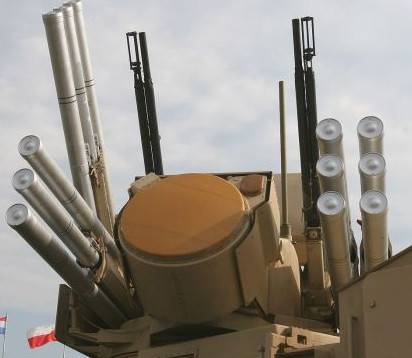
The combat module includes: a phased radar detection station, a radar system for tracking targets and missiles, and an optoelectronic fire control channel. Ammunition is 12 anti-aircraft missiles 57E6 and 1400 ready-to-use 30-mm rounds.
The 57E6 anti-aircraft missile looks and looks similar to the 9M311 SAM used in the Tunguska air defense system. Bikalibernaya rocket made by the aerodynamic scheme "duck". To aim at the target, radio command control is used. The engine is at the first separating stage. The length of the rocket is 3160 mm. The diameter of the 1st step is 90 mm. The mass in the TPK is 94 kg. Weight without TPK is 75,7 kg. The mass of the core warhead is 20 kg. The average flight speed of missiles at a range of 18 km is 780 m / s. Firing range - from 1 to 18 km. The height of the defeat is from 5 to 15000 m. The detonation of the warhead with a direct hit is provided by a contact fuse, with a miss - by a non-contact fuse. The probability of hitting an air target is 0,7-0,95. Possible shooting at one target with two SAMs.
Two double-barrel 30 mm 2A38M anti-aircraft guns have a total rate of fire of up to 5000 rds / min. The initial velocity of the projectile is 960 m / s. Effective firing range - up to 4000 m. Reach in height - up to 3000 m.
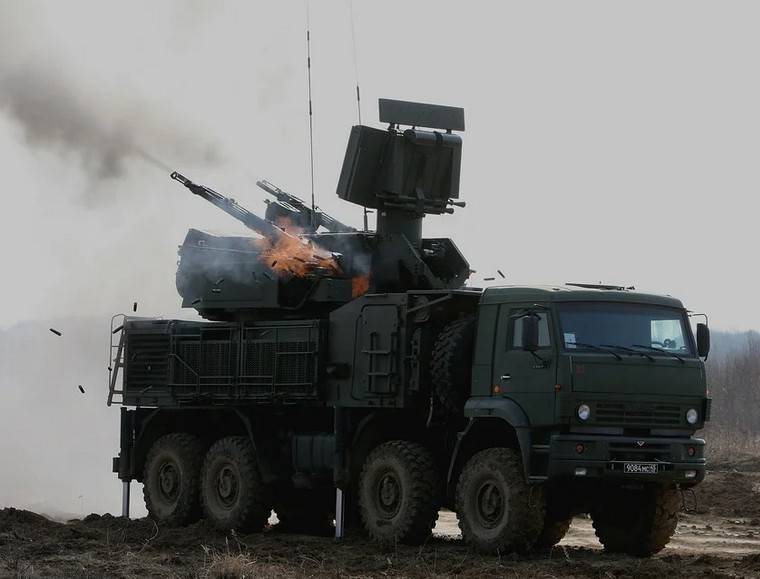
The radar station of the circular review of the decimeter range is capable of detecting an air target with an EPR of 2 square meters. m at a distance of up to 40 km and simultaneously conduct up to 20 targets. A radar for target tracking and guidance of a missile with a phased array operating in the millimeter and centimeter frequency ranges ensures the detection and destruction of targets with an EPR of 0,1 sq. m at a distance of up to 20 km. In addition to radar, the fire control system also contains a passive optoelectronic complex with an infrared direction finder, which is capable of digital signal processing and automatic target tracking. The whole system can work in automatic mode. The optoelectronic complex is designed for the daily detection of targets, their tracking and missile guidance. The automatic tracking range for a fighter target is 17-26 km, the HARM anti-radar missile can be detected at a range of 13-15 km. The optoelectronic complex is also used when shooting at sea and ground targets. Digital signal processing is carried out by the central computer complex, which provides simultaneous tracking of 4 targets with a radar and optical channel. Maximum speed of capture of air objects up to 10 units per minute.
ZRPK "Shell-C1" is able to work both individually and as part of a battery. The battery has up to 6 combat vehicles. The effectiveness of the complex increases significantly when interacting with other combat vehicles and when receiving external target designation from the central air defense command post of the area to be covered.
The Pantsir-C1 complex is highly advertised by the Russian media and carries a halo of “superweapon”, but it is not without a number of significant drawbacks. In particular, the Russian military has repeatedly pointed to the unsatisfactory patency of the KamAZ-6560 base chassis and its tendency to tip over. In the past, options were developed for placing the combat module on various wheeled and tracked chassis, but in our army there are no such vehicles. In addition, the capabilities of the optoelectronic station in terms of target detection and missile tracking very much depend on the transparency of the atmosphere, and therefore it is rational to switch to radar tracking of missiles, but this can increase the cost of the complex. The defeat of actively maneuvering small targets is difficult and requires more missile consumption.
In 2016, deliveries to the troops of an improved modification of the “Shell-C2” began. The updated ZRPK differs from the previous version by the presence of a radar with improved characteristics and expanded missile nomenclature. In 2019, information appeared in the media about the tests of the Pantsir-SM air defense missile system. The features of this complex are: a new multifunctional radar station with headlamps capable of seeing a target at a range of up to 75 kilometers, a high-speed computing system and more long-range anti-aircraft missiles. Thanks to these innovations, the firing range of the "Shell-SM" has increased to 40 kilometers.
Although the complexes of the "Shell" family have been adopted by the Russian army relatively recently, they have already passed baptism of fire. According to RIA "News”, in 2014, the Pantsir-S1 air defense missile system shot down several dronesflying in from Ukraine. According to information published in open sources, missile and gun systems deployed at the Khmeimim airbase in Syria have been repeatedly used to intercept unguided rockets and unmanned aerial vehicles.
At the end of December 2017, the Minister of Defense of the Russian Federation Sergey Shoigu stated that during the entire presence of the Russian Armed Forces contingent in Syria, 1 NURS and 54 UAVs were destroyed with the help of the Pantsir-C16 air defense missile system. However, the use of 57E6 missiles to destroy such targets is a very expensive pleasure, so the decision was made to create relatively inexpensive compact missiles with a shorter launch range.
At present, the main task of the Pantsir family air defense missile system is to protect important stationary objects from air attack weapons operating at low altitudes. In particular, the Shell-C1 / C2 batteries are attached to some anti-aircraft missile regiments armed with S-400 long-range air defense systems. This approach is entirely justified, it allows you not to spend expensive long-range missiles “four hundred” for secondary purposes and minimizes the risk of breakthrough cruise missiles to S-400 positions at low altitude. This is a significant step forward. Based on personal memories, I can say that in the past the positions of the S-200VM and S-300PT / PS air defense systems in the "threatened period" were to be protected by 12,7 mm DShK and Strela-2M machine guns. Separate radar companies until the mid-1990s were given 14,5 mm towed ZPU-4 units.
According to information published in open sources, as of 2018, the Pantsir-C1 complex was armed with 23 batteries. Foreign research organizations specializing in assessing the military power of various states agree that the Russian armed forces have more than 120 Zanzavod-Pantsir-S1 / C2. Given the size of our country and the number of strategically important facilities that need protection from air strikes, this is not such a large number. It should be recognized that our army is still far from being saturated with a sufficient number of modern air defense systems, while only a part of the long-range air defense missile systems are covered by missile-cannon systems.
To be continued ...
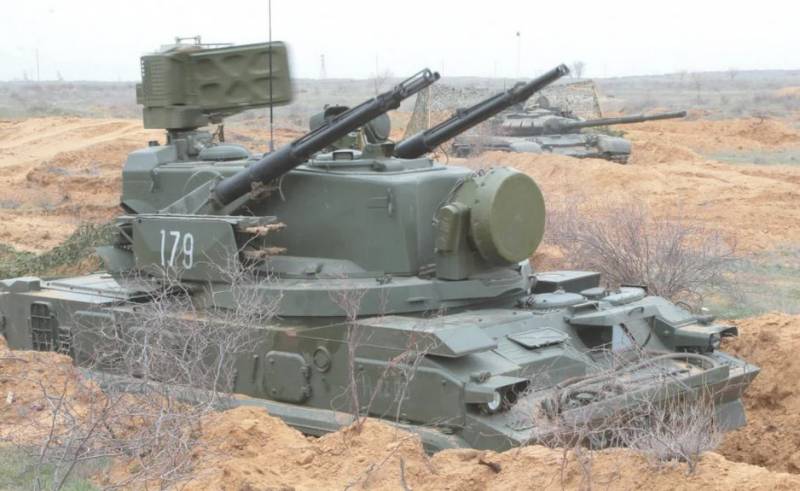
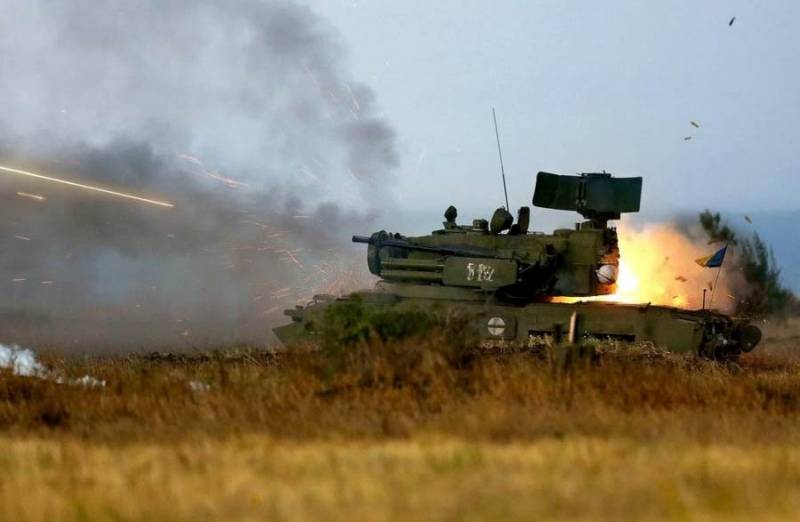
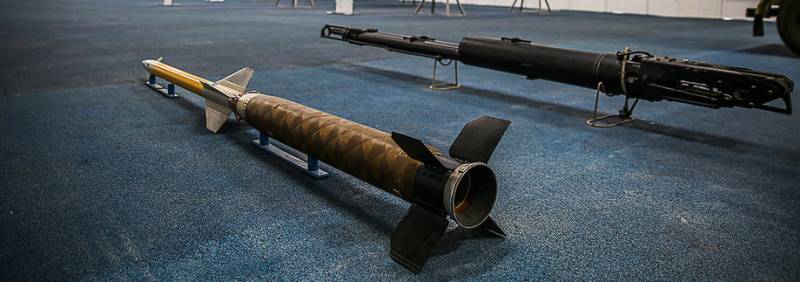
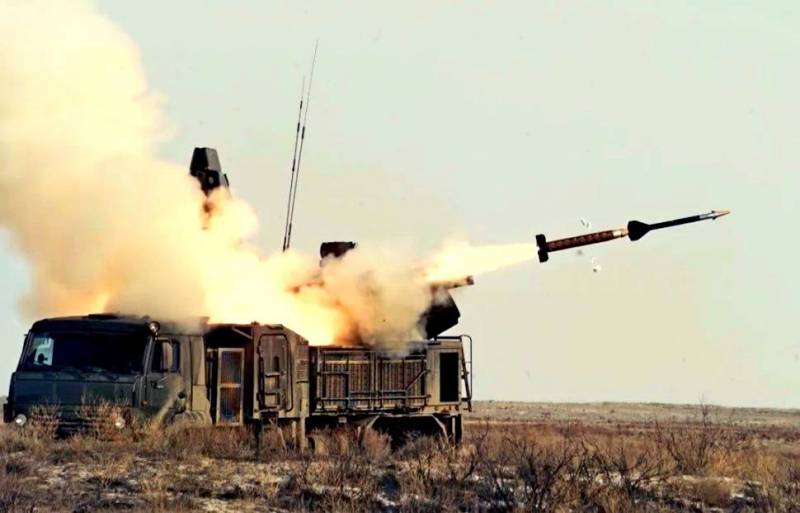
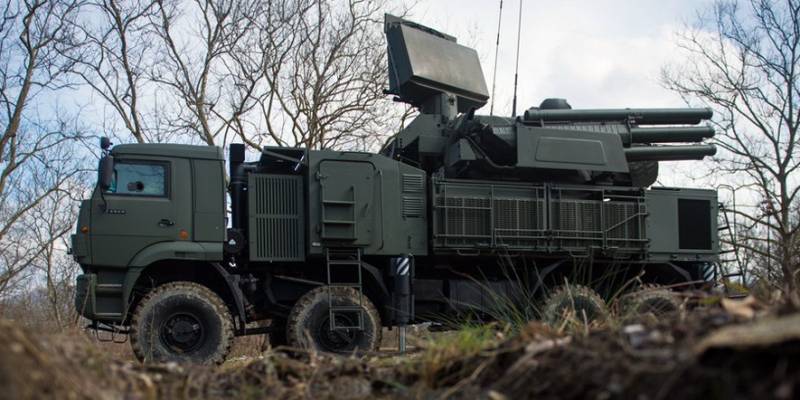
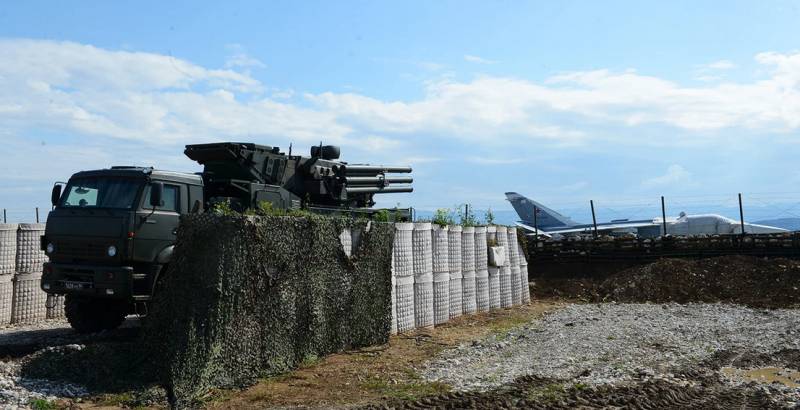
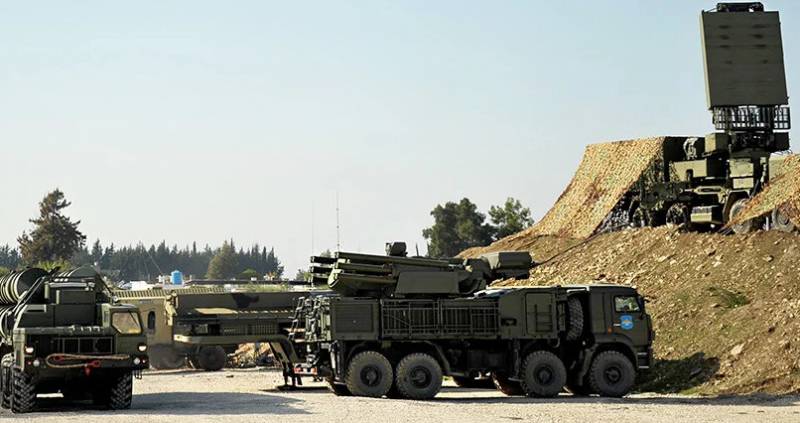
Information